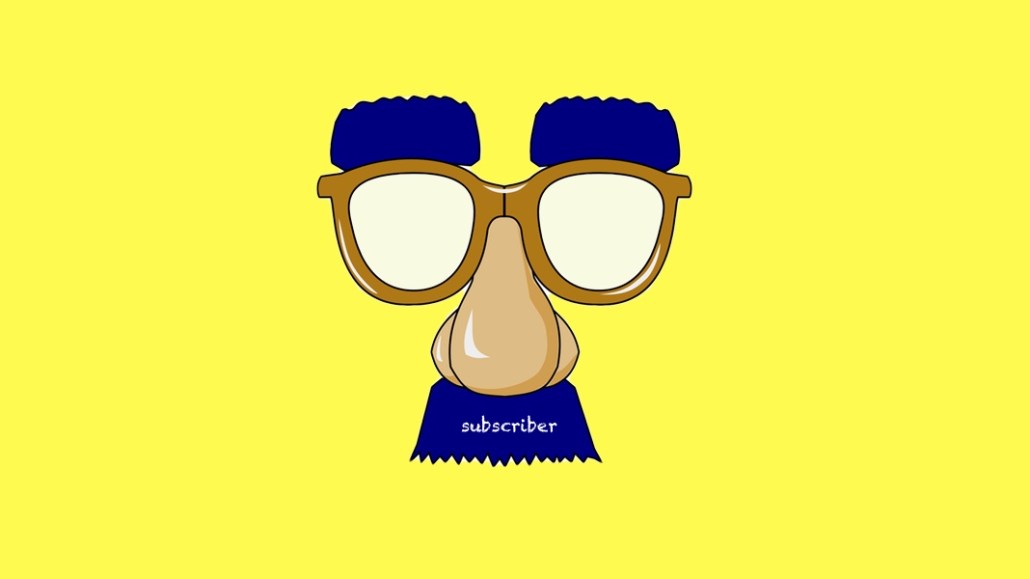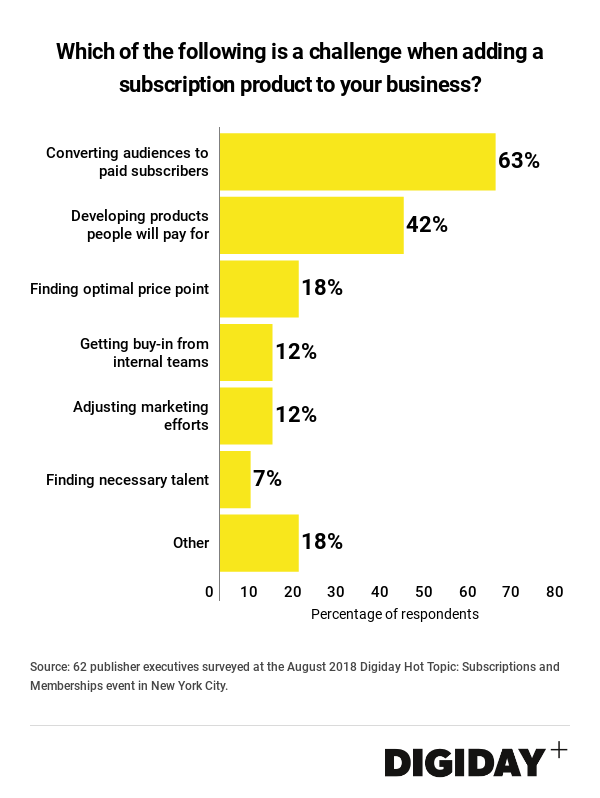Digiday Research: Publishers’ biggest subscription challenges

This research is based on unique data collected from our proprietary audience of publisher, agency, brand and tech insiders. It’s available to Digiday+ members. More from the series →
Subscriptions are in vogue for publishers as they increasingly attempt to generate revenue directly from their audiences instead of through advertising. But building subscription businesses isn’t easy, and publishers say the biggest challenges are the basic ones: Figuring out a product that people will pay for, and then figuring out how to drive conversions.
Sixty-three percent of publishers polled at the Digiday Hot Topic: Subscriptions and Memberships event in August said turning audiences into paying subscribers is a key challenge when creating subscription products, while forty-two percent pointed to developing products people will pay for.
There’s no shortage of free content available online, so many publishers are working to differentiate the content they’re attempting to charge for. Some are packaging together other benefits and perks. The Information (is experimenting with members-only conference calls and commenting capabilities, for example, while Variety offers additional industry research and event discounts to compliment unlimited content access. Others are experimenting with offering access to editors, interactive tools, Facebook Groups, data visualizations and even digital butlers.
But creating a subscription product doesn’t necessarily mean people will buy it. Publishers might be extremely adept at driving traffic and generating pageviews, for example, but convincing users to make purchases requires a different skillset and a different mindset. Many publishers are finding they need to build marketing and ecommerce capabilities and strategies they didn’t have previously, and finding the talent to do so isn’t easy.
Another issue many publishers are coming to terms with is that their actual audiences are far smaller than they’d thought. Publishers who relied on large amounts of traffic from Facebook and struggled to build meaningful brands or direct connections with their audiences may find it difficult to attract paying subscribers in the way more established brands and publishers might be able to.

More in Media

WTF is behind the explosion of faceless creators?
Brands are rapidly increasing their spending on faceless creators, showing the unique benefits of working with this type of influencer.

In Graphic Detail: As ‘Grow a Garden’ booms, a new report shows the marketing power of Roblox
The explosive growth of “Grow a Garden” has brought new attention to Roblox — and rejuvenated marketers’ interest in its advertising power.

Brand deals surge for golf creators as the sport’s popularity spikes
Golf is booming, and so is influencer marketing. As a result, golf creators are signing an unprecedented number of brand deals in 2025.





